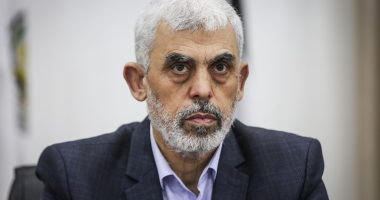
U.S. employers faced rapidly rising wages and benefits costs in the first quarter, as a tight labor market spurred organizations to compete for workers.
Business and government employers spent 4.5% more on worker costs in the quarter compared with the same period a year earlier, without adjusting for seasonality, the Labor Department said on Friday. That marked the fastest increase in records dating to 2001, and the gain eclipsed a 4.0% annual rate in the fourth quarter.
Compensation for American workers also accelerated on a quarterly basis, rising a seasonally adjusted 1.4% in the first quarter compared with a 1.0% increase in the fourth quarter.
Still, compensation gains failed to keep pace with inflation. Adjusted for inflation, compensation fell 3.7% in the first three months of the year from the same period in 2021.
Higher compensation costs are among the factors companies say are leading them to raise prices on goods and services. They also cite supply-chain disruptions, high energy and commodity prices pushed upward by the Ukraine war and robust consumer demand. U.S. inflation reached a new four-decade high of 8.5% in March from the same month a year ago, the fastest pace in four decades.
With an unemployment rate of 3.6% and 11 straight months of job gains above 400,000, employers face a dwindling pool of workers from which to hire: There were 11.3 million job openings in February compared with 6.3 million Americans who were unemployed but seeking work, according to the Labor Department. That makes recruiting workers more challenging and has prompted employers to rethink job requirements such as a college degree, certain types of training or the perks they offer, such as flexible schedules or remote work.
“We’re in an extreme talent-scarcity situation, especially in certain segments of the workforce,” said Karen Fichuk, chief executive of Randstad North America, a staffing consulting company. “We’re seeing employers definitely step up with pay rates and asking what they can do beyond pay.”
The industries with the tightest labor crunches among her clients appear to be transportation and logistics, healthcare and business services such as technology development, Ms. Fichuk said.
There were 1.86 million job openings in trade, transportation and utilities in February, and the sector also saw the most workers leave their positions, a sign of job-switchers finding better opportunities elsewhere, economists said.
“Labor continues to be an area with the greatest inflationary pressure in both professional driver and nondriver salary wages and benefits, and we expect that trend to continue throughout the remainder of the year,” John Kuhlow, chief financial officer of trucking giant J.B. Hunt, said on an earnings call last week.
More people are returning to the labor market, as the savings many built up during the past two years of the pandemic dwindle, as wages become more attractive and as Covid-19 case totals moderate, said Ben Herzon, executive director at IHS Markit.
“Over the last several months, the labor-force participation rate has begun to go up in earnest,” Mr. Herzon said. “If that continues, that will help put a cap on the rate of growth of wages.” That is because more workers will be available to fill openings, taking some pressure off employers to pay more.
RSVP Party Rentals, an events company in Las Vegas, is seeing signs that wage pressures are easing after demand for its services rebounded from earlier in the pandemic. The company scrambled to hire dozens of workers. It now has around 70 employees, up from eight earlier in the pandemic and similar to its prepandemic staffing levels.
Most of the jobs involve logistics—warehouse work, delivery and event setup and cleanup—but the company has added office workers as well. “It’s harder to find truck drivers. They’re in high demand,” said RSVP president Brad Smithers.
He estimated that his labor costs are 5% higher than they were a year ago but thinks the upward pressure is moderating.
“Corporate events are down, and private events are up a little bit, so some of those guys who worked corporate are coming to us for work,” Mr. Smithers said. “It’s gotten better—there are a fair amount of people coming to us for jobs.”
Write to Gabriel T. Rubin at [email protected] and Sarah Chaney Cambon at [email protected]
Copyright ©2022 Dow Jones & Company, Inc. All Rights Reserved. 87990cbe856818d5eddac44c7b1cdeb8








